Time Machine and Time Travel
(समय यात्रा)
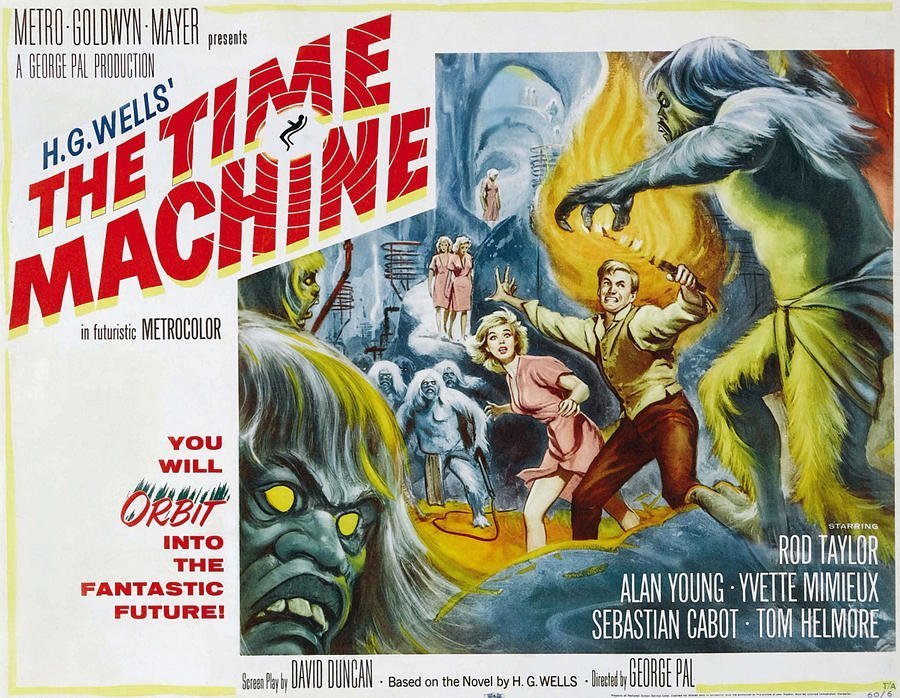
Time Machine and Time Travel(समय यात्रा)
“The Time Traveller proceeded, any real body must have extension in four directions: it must have Length, Breadth, Thickness, and-Duration. But through a natural infirmity of the flesh, which I will explain to you in a moment, we incline to overlook this fact. There are really four dimensions, three which we call the three planes of Space, and a fourth, Time. There is, however, a tendency to draw an unreal distinction between the former three dimensions and the latter, because it happens that our consciousness moves intermittently in one direction along the latter from the beginning to the end of our lives. “ -H.G. Wells, The Time Machine
Time travel machine real?

There was a time when time travel was a concept mainly fascinating the people interested in science fiction and fantasy, as the era began with the advent of “The Time machine” by the famous novelist H.G Wells but, today in the 21st century it’s a problem of science and engineering. Time travel is a concept in which time is traversed in much the same way that space is traversed. Time is Nature’s way of making each and every event to happen all at once. Time also has direction- some things happen in a certain sequence and could never happen on their own in a reverse sequence. As an example, an accidentally dropped glass shatters into pieces but the reverse process, a shattered glass reforming into a glass will never happen on its own. But why not? why can’t that process be reversed like a video run backward? What in the world gives direction to time? The physicists say that increase of disorder or entropy with time is one example of what is called an arrow of time, which distinguishes the past from the future, giving a direction to time. They propose three different arrows of time. First, there is the thermodynamic arrow of time, the direction of time in which entropy increases. Then, there is the psychological arrow of time, the direction in which we feel time passes, the direction in which we remember the past but not the future. and finally, there is the cosmological direction of time, in which the universe is expanding rather than contracting. Time Machine and Time Travel( समय यात्रा )
Time travel used to be thought of as just science fiction, but Einstein’s general theory of relativity allows for the possibility that we could warp space-time so much that you could go off in a rocket and return before you set out. -Stephen Hawking
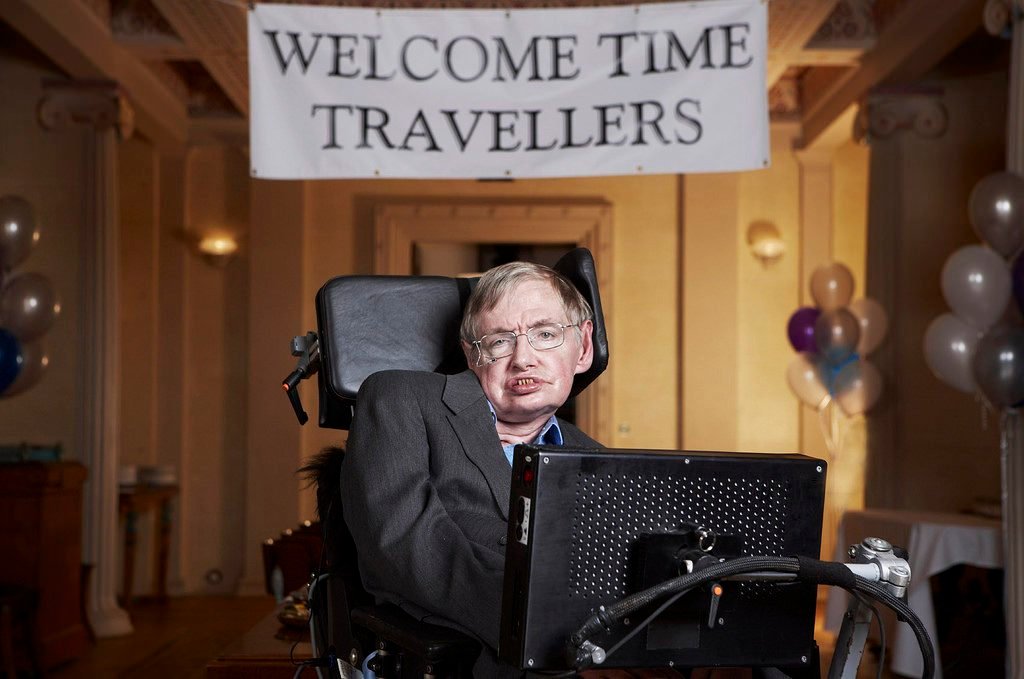
I find the whole time travel question very unsettling if you take it to its logical extension. I think it might eventually be possible, but then what happens? – William Shatner
The bottom line is that time travel is allowed by the laws of physics. – Brian Green
“People like us, who believe in physics, know that the distinction between past, present, and future is only a stubbornly persistent illusion.” – Albert Einstein

The thermodynamic arrow of time is intertwined in the second law of thermodynamics which results from the fact that there are always many more disordered states than there are ordered ones. For example, consider the pieces of a jigsaw in a box. There is one, and only one arrangement in which the pieces make a complete picture. On the other hand, there are a very large number of arrangements in which the pieces are disordered and don’t make a picture. Now, the question arises as to why is disorder increasing in the same direction of time as that in which the universe is expanding? One answer can be that cosmological arrow makes the things so appropriate in such a manner that intelligent beings can exist only in the expanding phase of the universe. The contracting phase will be unsuitable because it has no strong thermodynamic arrow of time. Philosophers call this anthropic principle, which can explain why all three arrows point in the same direction. why a well-defined arrow of time should exist at all. Famous physicist Stephen Hawking says that “the psychological arrow is determined by the thermodynamic arrow, and that these two arrows necessarily always point in the same direction.”
Time Machine and Time Travel. How to make a time travel machine?
Time travel possible?
As Einstein said the laws of science do not distinguish between the past and the future. These laws are also unchanged under the combination of certain operations (or symmetries) known as C, P, and T. Here, C means changing particles for antiparticles, for example, electron and positron. P or parity means taking the mirror image, so left and right are interchanged. And T or time reversal means reversing the direction of motion of all particles i.e, running the motion backward. The laws of science are unchanged under the combination of the two operations C and P on their own. In other words, life would be just the same for the inhabitants of another planet who were both mirror images of us and who were made of antimatter, rather than matter.
According to Issac Newton time is like an arrow that never deviated from its path, but Einstein said that time is like a river in which there is the possibility of bending time through a whirlpool in the river or the river forking off into two (or more) rivers.
“I myself believe that there will one day be time travel because when we find that something isn’t forbidden by the over-arching laws of physics we usually eventually find a technological way of doing it.” -David Deutsch
In 1905, Einstein proposed his special theory of relativity. The theory proposes two fundamental principles, or “postulates”:
- The laws of physics are same for “everybody.”
- The speed of light is same for “everybody.”
The phenomenon that light travels at the same speed for everyone has been confirmed many times by experiment. The second postulate may sound weird, Well, it ’s probably the most interesting fact which leads to an effect known as time dilation which gives the possibility of time travel to the future. The effect that moving clocks run slower is known as time dilation. For example, a clock in a moving train will register a shorter amount of time, because it’s ticking slower, the faster the train moves, the slower that clock will tick on the train; i.e., the slower the time will pass in the train.
But we don’t seem to notice it in everyday life because for this effect to be noticeable requires the speeds to be near the speed of light, which is much greater than the speed of the train. But elementary particles like electrons and protons can travel very close to the speed of light, and time dilation has been observed for these particles exactly as special relativity predicts. Many other interesting effects like length contraction arise from these two postulates in which sticks get shorter the faster they move but for time travel we need only time dilation. Considering first, time travel to the future is possible, take off from Earth in a spaceship, reaching a speed very close to the speed of light, and then turn around, eventually returning to Earth. On returned, you’ll have aged less than the people on Earth. So, if someone adjusts his speed just right, then as 1 years pass by for him on the spaceship, 10 years pass by on the earth! but we have to go very fast for this to happen, something like 99.999% of the speed of light.

This method of traveling into the future is definitely allowed by physics and is very uncontroversial, everybody in physics agrees that this method is possible, in principle. With today’s technology, we haven’t even been able to get spaceships to go 0.01% speed of light. So, with today’s technology, time travel to the future by this method is certainly not feasible.
Conservation of Mass/Energy: The net amount of matter and energy in the universe is constant at any given time. If a person travels back in time, the net mass/energy at the origin is lowered while the net mass/energy at the destination is increased.
If extraterrestrial civilizations existed and have technologies such as antimatter rockets, nuclear ramjets etc., they will definitely be able to attain near light speed. So in principle people have already thought of to get very fast but we are far behind such technologies and harnessing these possibilities. But, in principle, that may be.
Time travel theory
Einstein’s general theory of relativity: Special relativity is a special case of the general theory. After Einstein came up with the special theory, it took him over 10 years to figure out the general theory. The general theory of relativity(GTR) is a much more sophisticated and complex theory than special relativity. Nonetheless, the basic concepts are very simple. According to general relativity, mass curves spacetime. And the more mass there is somewhere, the more spacetime will be curved there. Now, what is spacetime, and what does it mean for it to be curved? According to GTR, space and time are not separate entities but are fundamentally connected to each other, and they may together be thought of as forming a unified object called “spacetime.” They’re like the two sides of a coin which are fundamentally different from each other, but it’s impossible to think of them separately.
Twin’s paradox Arises from the theory of special relativity and uses the concept of time dilation. One of two twins undertakes long space journey at a speed close to that of light. Due to time dilation, the amount of time observed by the twin moving is less (Lorentz factor) than the time observed by the stationary twin.
Ontological Paradox Used to argue why history can not be changed by time travel. Backward time travel is only fulfilling role in history, not changing it. Whatever has happened was meant to have happened. Raises the question of where, when, and by whom items or information are created.
According to STR, Space and Time are not possible to separate but is a single entity called spacetime. “Spacetime interval” is the new concept of distance, given by:
Time appears to pass more slowly for faster-moving bodies gives rise to Twin’s Paradox. In a world where there is no gravity, we say that spacetime is not curved but it is flat. This flat spacetime is described by special relativity. There’s a precise mathematical meaning of spacetime being curved or spacetime can have the property of being “curved”. Time operates very differently in curved spacetime than in flat spacetime. In curved spacetime, there is the effect of gravitational time dilation. Clocks tick slower near massive bodies than far away from them. In other words, the greater the gravity, the slower a clock will tick. Gravitational time dilation provides an alternative method for traveling into the future! Suppose you are sitting near a very massive object, where spacetime is very curved. Then a very short amount of time may elapse for you, a very long amount of time may elapse for someone far away from the very massive object. As a result, you’ll have traveled into the future!
GTR, being the bizarre theory, allows for the existence of very strange objects called “wormholes” when the geometry of spacetime is highly curved. A wormhole is a shortcut path between two regions in spacetime. For example, consider the star Sirius, which is approximately 54 trillion miles away. If you traveled at nearly the speed of light, it would ordinarily take you about 9 years to reach there. If Earth and Sirius were connected by a wormhole, then it’s possible to travel through the wormhole which may only be 10 feet long and thereby reach the Andromeda Galaxy in a matter of seconds! Wormholes are the hypothetical topological feature of spacetime which is basically a ‘shortcut’ through space and time analogous to a worm burrowing through an apple rather than traveling around the surface. One end of the wormhole is accelerated to near speed of light and brought back to point of origin.
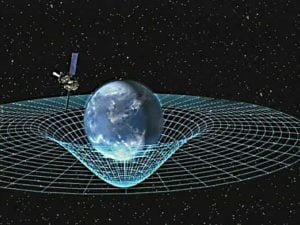
Time Machine and Time Travel
( समय यात्रा )
Due to time dilation, opposite ends of wormhole experience different subjective passage of time. Therefore traveling through the wormhole would be traveling to a different point in spacetime. But it would require much more energy than the sun can produce in its lifetime. The wormhole connects two far away points. You might be wondering what the stuff between space is. Is it some higher dimensional space, a hyperspace, a 4th dimension of space? Well, this is not some kind of a hyperspace. It’s actually nothing but an artifact of the diagram. People needed to draw space being curved in some kind of way, with a wormhole connecting two parts of space, because this is the only way they can think of to do it As a result, you have this extra stuff, which actually doesn’t correspond to anything.
General relativity does not need an extra dimension of space to explain wormholes. It’s weird enough to get the job done in 3 spatial dimensions(space) and one temporal(time). A hypothetical “time machine,” capable of traveling into the past, could be made out of a wormhole connecting Earth and Sirius by taking the end, or “mouth,” of the wormhole near Earth and accelerating it up to near the speed of light and then bring it back to Earth. As a result of time dilation, we then expect that the accelerated mouth of the wormhole will have aged less than the mouth of the wormhole that remained stationary near Sirius.
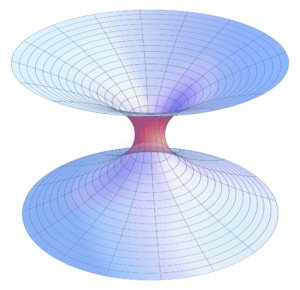
Time Machine and Time Travel
Suppose someone entered the mouth of the wormhole which was accelerated, and it resulted in that mouth aging 5 years while the other mouth aged 10 years. And say that, at the end of the process, it’s the year 2021 at the accelerated mouth and the year 2026 at the mouth that remained stationary. When we go inside the wormhole, and we observe that it’s 2016 at the stationary when we exit through. In this way, we would have traveled into the past of the stationary mouth of the wormhole! Now the situation becomes even more interesting when the two mouths could theoretically be located in your living room before you accelerate one of the mouths. So, initially, it might be the year 2016, say. You accelerate one of the mouths up to a very high speed and then bring it back to your living room, where your calendar shows it to be the year 2026. So, the accelerated mouth of the wormhole aged 5 years whereas the stationary mouth aged 10. According to GTR, walking through that accelerated mouth into the other mouth located in the living room, we’ll soon find it to be the year 2016 again!

Unfortunately, wormholes are highly unstable objects, However, this instability can be overcome if we got some exotic material, a matter which essentially has negative mass! Also, the actual construction of a wormhole is difficult, since, for example, a time machine might be required for the construction process. But if we overcome these difficulties, the past is ours! But this type of time machine only allows time travel to as far back in time as when the time machine was created. We’ll not be able to re-witness (through wormhole time machines) our nation’s declaration of independence or Einstein’s discovery of relativity which led to all these notions of time travel fantasy!
Grandfather Paradox
It says that backward time travel is not possible. For example, you travel back in time and kill your biological grandfather before he met your grandmother. One of our parents, and thus you, would never have been conceived. It is therefore impossible for you to have traveled back in time to kill your grandfather. Therefore your grandfather would have lived to conceive your parent, who would have conceived you.

Predestination Paradox
Somewhat opposite to the grandfather paradox. A loop of events in time that predestine a time traveler to travel in the first place. a closed causal loop so, events are both cause and effect of one another.
So what do really smart people think? Stephen Hawking suggests that the absence of time travelers from the future shows that their existence is unlikely. Carl Sagan once suggested that time travelers could be here but that they are disguising their identities. What do you think?
A Theory of Everything implies extra dimensions & makes time travel possible. Einstein attempted to discover a Theory of Everything even on his deathbed he tried. He believed that all of “God’s thoughts” could be expressed in an equation. Einstein’s theory of Relativity brings forth the possibility of time travel and also a cosmic singularity Einstein died trying, but others may have succeeded. Ronald L. Mallett Received Ph.D. from Penn State University at age 25. Professor of physics at the University of Connecticut. Specializes in quantum gravity, general relativity, and time travel. he was featured in 2003 BBC documentary “The World’s First Time Machine.” Working on plans for a time machine using Ring Laser (Light Cylinder). His life’s dream is to travel back in time to save his father who prematurely died of a heart attack at age 33.

Time travel to the past
There is a problem with breaking the speed-of-light barrier. The theory of relativity says that the rocket power needed to accelerate a spaceship gets greater and greater the nearer it gets to the speed of light. We have experimental evidence for this, not with spaceships but with elementary particles in particle accelerators like those at Fermilab or CERN (European Centre for Nuclear Research). We can accelerate particles to 99.99 percent of the speed of light, but however much power we feed in, we can’t get them beyond the speed-of-light barrier. Similarly with spaceships, no matter how much rocket power they have, they can’t accelerate beyond the speed of light. So wormholes, like any other possible form of travel faster than light, would allow one to travel into the past. The idea of wormholes between different regions of space-time was not an invention of science fiction writers but came from a very respectable source.

In 1935, Einstein and Nathan Rosen wrote a paper in which they showed that general relativity allowed what they called “bridges,” but which are now known as wormholes. The Einstein-Rosen bridges didn’t last long enough for a spaceship to get through: the ship would run into a singularity as the wormhole pinched off. However, it has been suggested that it might be possible for an advanced civilization to keep a wormhole open. To do this, or to warp space-time in any other way so as to permit time travel, one can show that one needs a region of space-time with negative curvature, like the surface of a saddle. Ordinary matter, which has a positive energy density, gives spacetime a positive curvature, like the surface of a sphere. So what one needs, in order to warp space-time in a way that will allow travel into the past, is matter with negative energy density.
How to make a time travel machine?
Quantum laws are somewhat more flexible and allow you to do so provided the total balance is positive. In other words, quantum theory allows the energy density to be negative in some places, provided that this is made up for by positive energy densities in other places, so that the total energy remains positive. Casimir effect is an example of how quantum theory can allow negative energy densities. There seem to be two possible resolutions to the paradoxes posed by time travel. One is called the consistent histories approach. The other possible way to resolve the paradoxes of time travel might be called the alternative histories hypothesis which rather seems to be inspired by Richard Feynman’s way of expressing quantum theory as a sum over histories, He said that the universe didn’t just have a single history rather it had every possible history, each with its own probability. However, there seems to be an important difference between Feynman’s theory and alternative histories. In Feynman’s sum, each history comprises a complete space-time and everything in it. The space-time may be so warped that it is possible to travel in a rocket into the past. But the rocket would remain in the same space-time and therefore the same history, which would have to be consistent. Thus Feynman’s sum over histories proposal seems to support the consistent histories hypothesis rather than the alternative histories. Thus, Feynman sum over histories theory allows to travel into the past on a microscopic scale.
The Heisenberg’s uncertainty principle and Godel’s incompleteness theorem may seem to be a fundamental limitation on our ability to understand and predict the universe, but so far at least it hasn’t seemed to be an obstacle in our search for a complete unified theory. The Godel’s solution and the cosmic string space-time started so abruptly that traveling into the past was always possible. God might have created such a warped universe but we have no reason to believe he did. Observations of the microwave background radiation and of the abundances of the light elements in the universe indicate that the early universe did not have the kind of curvature required to allow time travel. Finally, the journey may seem to be much shorter for the space travelers than for those who remain on earth. But there would not be much joy in returning from a space voyage a few years older to find that everyone you had left behind was dead and gone thousands of years ago.
References:
The Time machine by H.G. Wells
A brief history of Time by Stephen Hawking
MIT OCW
Fundamentals of Physics by R.Resnick & Haliday
An introduction to Einstein’s General Relativity by James B. Hartle
Written by: Prashant Kumar Sinha


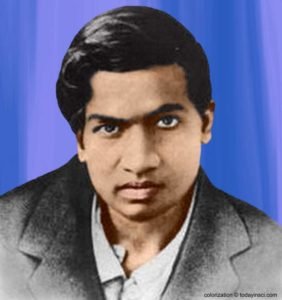
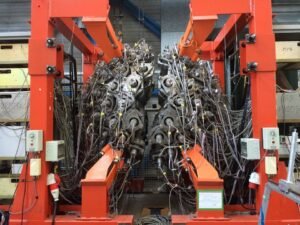
Very good article
Amazing and I want to learn more about gravitational time dilation
You should learn GTR first. Follow An introduction to Einstein’s General Relativity by James B. Hartle